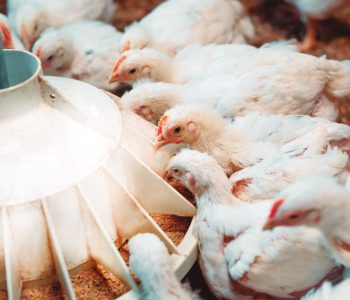As research advances on the requirements of phosphorus and calcium for broilers, new considerations regarding the utilization of these nutrients by birds are being observed.
In this regard, the recommended levels of available and digestible phosphorus by genetic companies and research centers (Table 1) show a trend of remaining relatively high in the initial stages and progressively decreasing in the later stages. The same trend can be observed for calcium recommendations as well.
Table 1. Compilation from FEDNA, Rostagno, and genetic companies.
Regarding the requirements, it should be noted that research in the field of epigenetics demonstrates that the utilization capacity of phosphorus in birds can be modified by varying the levels of calcium and phosphorus in early feeding.
Diets with low levels of calcium and phosphorus during the first 90 hours after hatching allowed for better management of phosphorus deficiencies in the growth and finishing phases compared to diets with higher percentages of calcium and phosphorus in the early stages (Ashwell & Angel, 2008). In addition to using tables from different sources, we can directly calculate the requirement based on equations that consider daily growth, age, sex, and feed intake.
As an example, if we base our calculations on the equation presented in the Brazilian Tables for Poultry and Swine 4th Edition (Rostagno, 2017) for calculating digestible phosphorus, we obtain digestible phosphorus values between 0.39% and 0.42% for starter diets from 8 to 21 days, depending on the sex of the bird.
It is important to consider that by the time the bird reaches an average weight of 3.0 kg, it has consumed approximately 17 grams of digestible phosphorus (equivalent to approximately 20 grams of available phosphorus), half of which is consumed before 28 days. Therefore, it is crucial to properly evaluate the ingredients in terms of their contribution.
This is not difficult for inorganic sources such as phosphates, but special attention must be given to plant-based ingredients in order to calculate the amount of phytic phosphorus in the diet and choose the appropriate phytase matrices.
When formulating a phytase, the dose and respective matrix should be considered, which depend on the amount of phytic phosphorus provided by the ingredients in the ration (Graph 1). Currently, formulating with 1000 FTU per ton of balanced feed in broilers is common, and the trend is to formulate with higher doses to maximize phosphorus utilization.
Graph 1. Phytic phosphorus content in ingredients (Rostagno, 2017).
Graph 2. Contribution of available P from a 6-phytase (EC 3.1.3.26).
For example, a growth diet formulated with corn, soybean, wheat, and barley (Table 2) has a phytic phosphorus value of 0.26%. It should be considered that the latest generation of phytases is capable of hydrolyzing approximately 80% to 90% of the present phytate, which means that for this particular diet, there is a potential contribution of 0.20% to 0.23% of available phosphorus, which should be the basis for choosing the dosage based on the matrix for each dose.
It should be noted that these enzymes can also be used at higher doses of 2000 to 3000 FTU (referred to as overdosing) in order to reduce the antinutritional effect of phytates and increase diet digestibility. Depending on the pH of the environment, phytate can form complexes with amino acids or cations like calcium, reducing the digestibility of these nutrients and the phosphorus content in the complex.
Other factors to consider are the speed of action of phytase in degrading IP6 (phytic acid), the range of action at different pH values, energy and protein evaluation in combination with other nutritional additives, and technical considerations such as particle size, mixing capacity, and thermo-stability.
We must consider that the solubility of this ingredient affects the digestibility of phosphorus and the action of phytases, especially if there are high initial solubility values. Therefore, we must also consider this aspect when assessing the matrix of a phytase.
It has been found that in the absence of phytase, diets with high calcium concentrations (1% vs. 0.6%) result in decreased phosphorus digestibility, and the same occurs with reduced particle size (75 microns vs. 402 microns DGM).
Under this scenario, the addition of 1000 FTU of a phytase increased the digestibility of phosphorus and calcium, achieving the highest values with coarser calcium carbonate and the lowest total Ca values in the diet (S.W. Kim, R. Angel, and M. Proszkowiec-Weglarz 2018).
Regarding calcium level recommendations, we continue to talk about total calcium with research advances towards the next step, which should be formulating with digestible calcium.
If we consider the calcium digestibility values determined for vegetable ingredients, phosphates, and carbonates with the addition of phytases, we can generally say that a diet with 0.35% digestible phosphorus could reach digestible calcium values close to 0.50%, resulting in a Ca digestible/P digestible ratio of 1.4 (Table 2).
Table 2 also shows the proportions of calcium and phosphorus in their different forms in a growth formulation for broilers.
Table 2. Recommended growth formulation for broilers.
We can also observe in graphs 3 and 4 that the majority of phosphorus contribution is provided by the phytase (approximately 50%) hydrolyzing around 80% of phytic phosphorus and by phosphate.
Graph 3 and 4. Contribution of available P in a growing diet.
As for the contribution of total calcium, calcium carbonate is the main participant (Graph 5), so we must pay special attention to the described characteristics of particle size and solubility. Generally, it is recommended to use calcium carbonate particles between 1000 and 1400 microns with a normal particle distribution.
Graph 5. Contribution of total calcium in a growing diet.
We must also consider that the use of additives such as calcium pidolate allows for increased efficiency in calcium digestibility and contributes to the action of phytases by reducing the total amount of calcium in the formulation.
In summary:
Source: This article was originally published as a Spanish content in nutriNews LATAM November 2022
